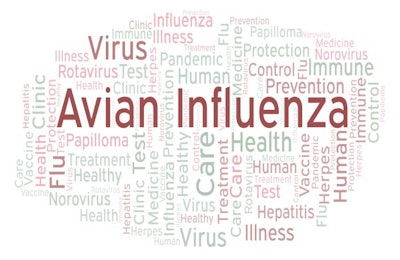
South Korea’s agriculture ministry continues to record new outbreaks of HPAI.
Since the first HPAI outbreak of this winter in November of 2020, the total for confirmed outbreaks linked to the H5N8 HPAI virus variant in poultry stands at 103. More than 28.8 million poultry have been culled, reports Yonhap.
Over the past week, cases have been detected at three egg farms the city regions of Icheon, Pocheon and Wonju. The first two of these are in Gyeonggi province in the northwest of the country, near to the capital, Seoul. Wonju is located in the northeastern province of Gangwon.
Latest outbreaks highlight the market disruption in South Korea resulting from HPAI. With more flocks of laying hens are infected, egg prices continue to be very high — 48% up on a year ago, according to the news agency. This is despite a recent government move lifting tariffs on imported eggs. Less impacted is chicken meat, but it now retails for 14% more than last year.
As well as the cases in poultry, South Korea has confirmed the infection in 208 wild birds.
Japan records one new outbreak
With confirmation of one new primary HPAI outbreak, the total recorded Japan’s agriculture ministry has reached 51. Including secondary outbreaks, the nation’s total stands at 75.
Latest cases were in Miyazaki prefecture on the most westerly region of Kyushu. The country’s most recent outbreak was registered 10 days previously.
By mid-February, 7.1 million poultry had been culled in Japan to control the spread of HPAI.
First cases in poultry in northern Indian region
In the northern Indian region of Kashmir, HPAI has been detected for the first time in poultry. According to the Kashmir News Service, one sample taken from Iqbal market in Baramulla tested positive in surveillance tests carried out last week.
Subsequent tests in the market revealed no further positive results. All poultry shops have been sanitized.
The virus detected was confirmed as the H5N8 HPAI virus variant, reported Greater Kashmir. A 10-kilometer alert zone has been set up around Baramulla town.
According to the same source, HPAI had previously been found in wild and captive birds in several districts of Jammu and Kashmir.
Last week, Bombay High Court advised the authorities in Nandurbar district not to carry out a widespread cull of poultry, reported Indian Express.
Responding to a plea brought by two farmers, the judges stopped short of ruling the cull illegal. Authorities in the district of Maharashtra state were following the advice of experts after a “large number” of the poultry in the district were infected, including 21 nearby farms.
At the end of last week, Times of India reported the deaths of 44 poultry in five districts of Maharashtra, including Nandurbar. Samples were under investigation to determine the cause of death.
Around 834,000 poultry (including 700,000 in the municipality of Navapur in Nandurbar) and more than three million eggs have been destroyed in the infected zone in the far north of the state.
As well as wild birds, mortalities of 343 poultry were recorded earlier in the week in the area, according to the same source.
Two new outbreaks in Nepal
Following a short absence, HPAI has been detected again in Nepal’s Kathmandu district, reports Himalayan Times.
Around 15,400 poultry were culled after samples from several farms in Tarakeshwar municipality tested positive for the virus. Also destroyed were 3.570 eggs, several turkeys and quail, and three metric tons of grain for poultry feed.
In early February, the H5N8 HPAI virus was detected at a farm in the same municipality after a spike in mortality was observed. It appeared that the outbreak was quickly brought under control.
Two weeks later, there was a further outbreak at a small farm in Surkhet district, according to Himalayan Times. Around 380 poultry (chickens and pigeons) were culled and destroyed in relation to that outbreak.
Located in the Karnali region in the northwest of Nepal, Surkhet is far from Kathmandu.
Just one avian flu control zone remains in Australia
Restrictions put in place following a number of avian flu outbreaks in July and August of last year have been lifted further, reports the agriculture department for the state of Victoria.
Only remaining restriction is a small Control Area around the property in Bairnsdale.
In 2020, three farms in Victoria were infected with the H7N7 HPAI virus. Mild forms of the H5N2 variant were detected at two turkey farms, and an H7N6 subtype in a domestic emu flock.
Since the last outbreak of HPAI in 2015, the U.S. poultry industry has become better prepared to control the disease. However, small flocks still pose a risk.
View our continuing coverage of the global avian influenza situation.

















